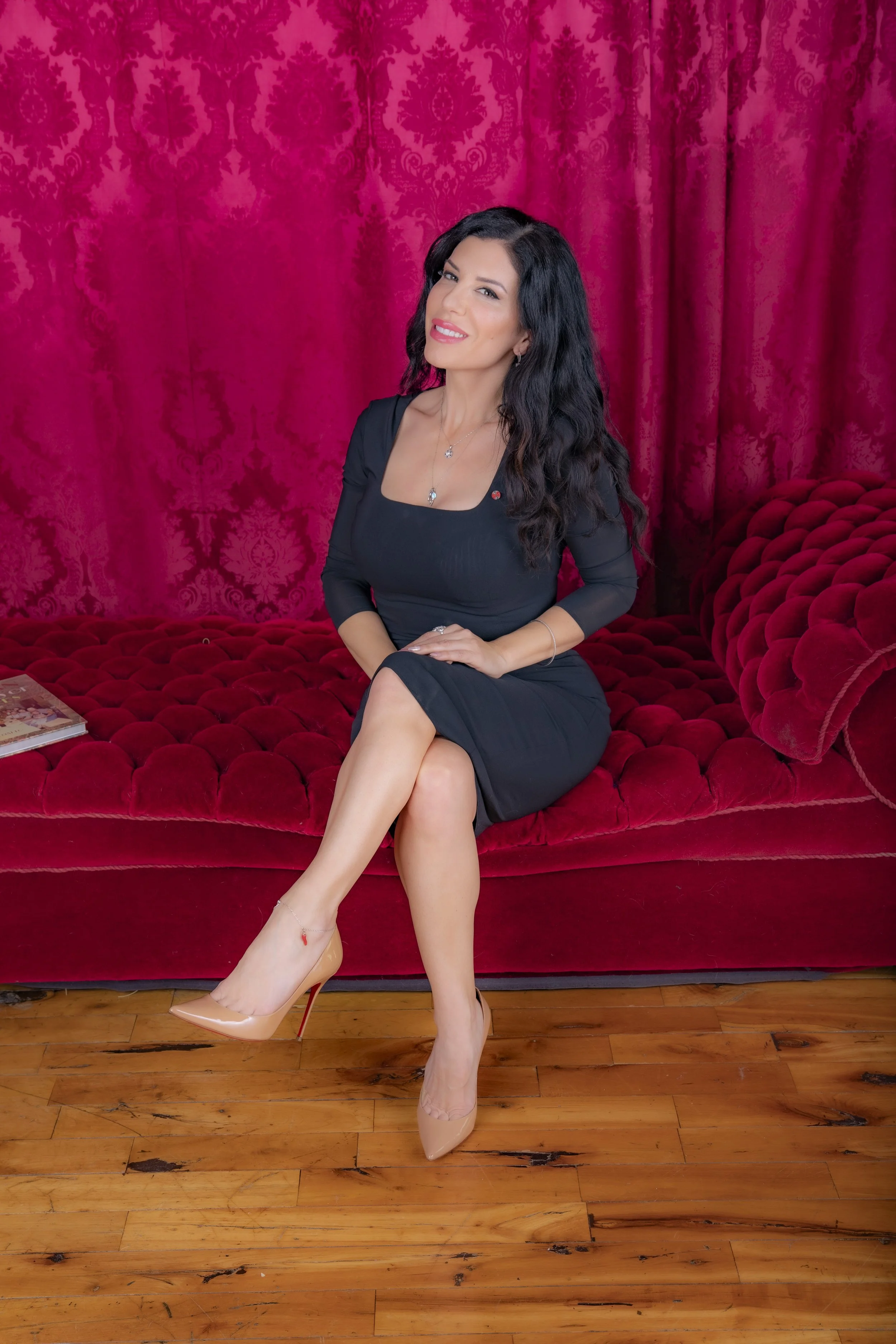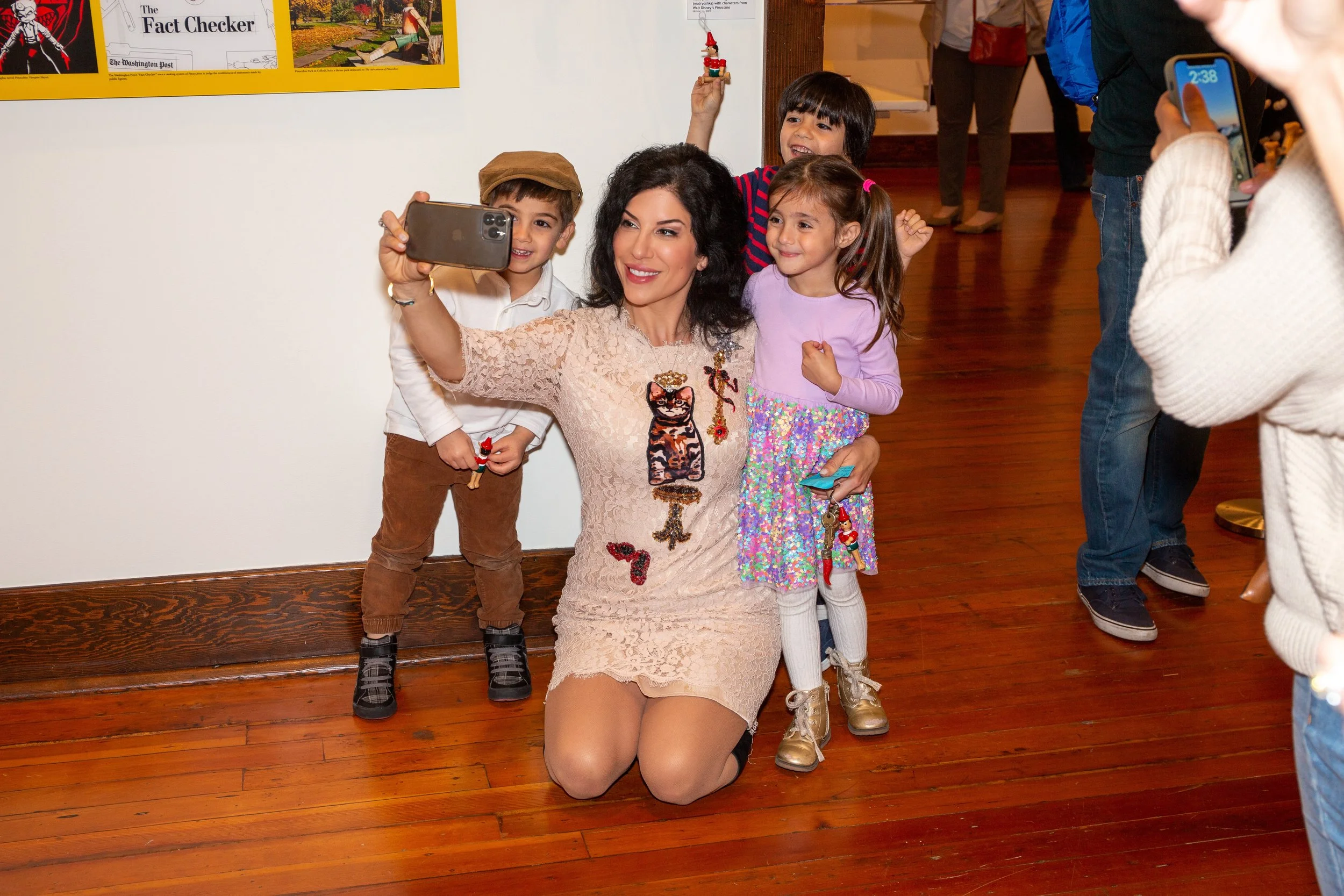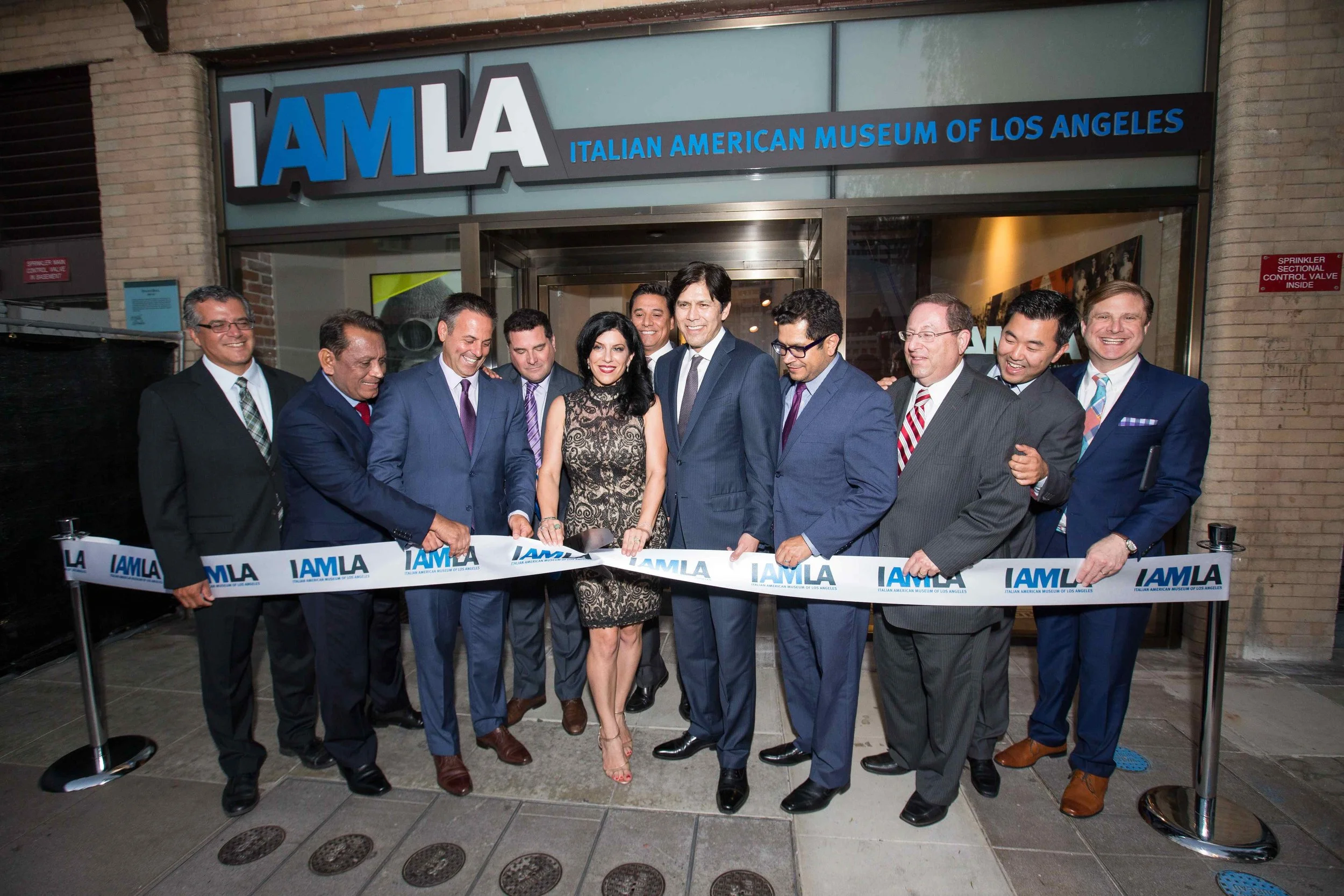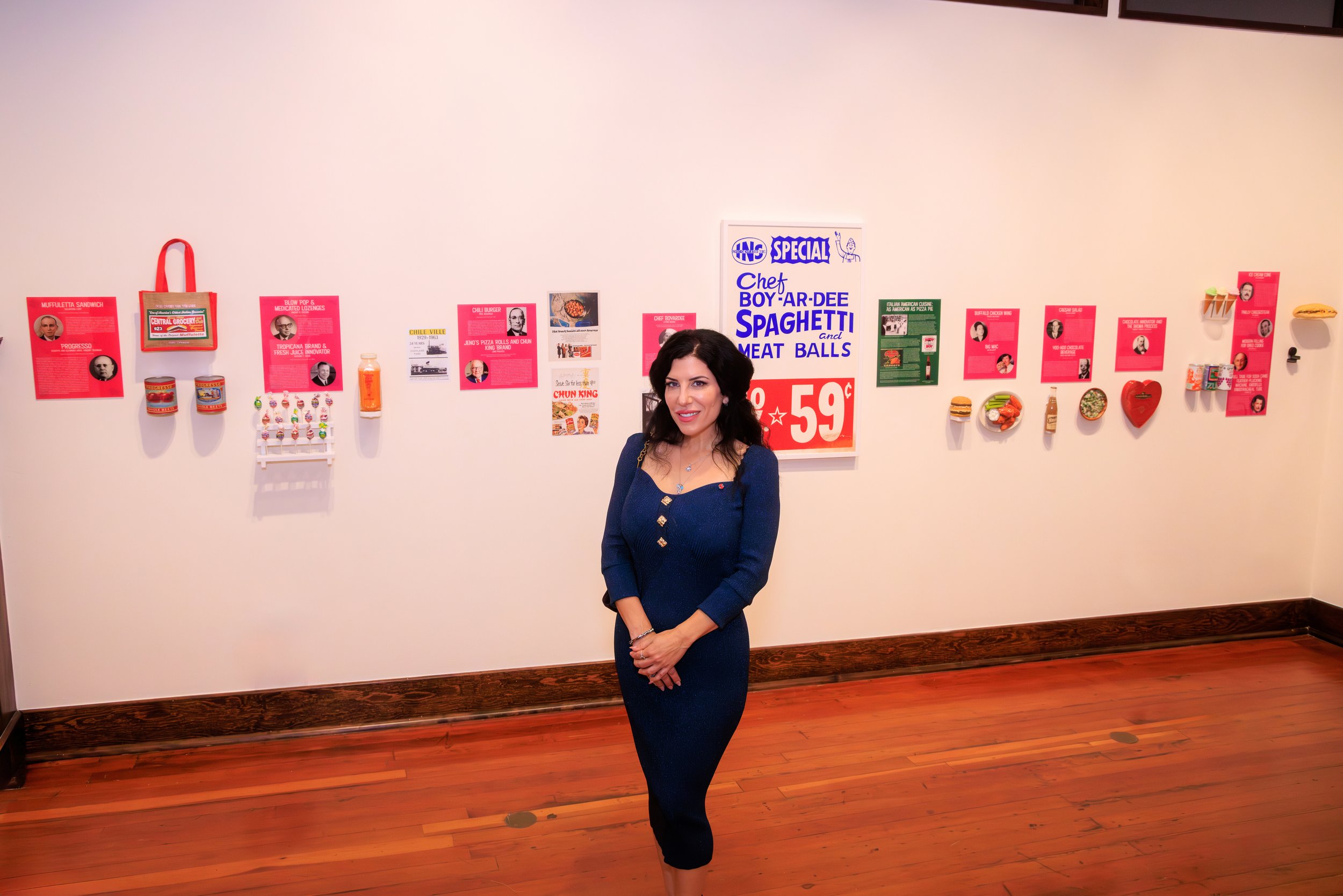In Discussion with Marianna Gatto
Photo Credit: Carol Sheridan
Marianna Gatto is the Executive Director and Co-founder of the Italian American Museum of Los Angeles and has held this position since 2010. Gatto’s roles span from fundraising and development to museum management and advocacy. A historian and educator, Gatto wrote and curates the museum’s award-winning permanent exhibition as well as its temporary exhibitions. Gatto is a published author who has appeared in various documentaries, consulted for major networks, and is a frequent guest speaker. A Los Angeles native, Gatto earned a B.A. in social science and an M.A. in history and education. In 2020, Gatto was knighted by the Italian Republic, receiving the Cavaliere dell’Ordine della Stella d’Italia (Knight of the Order of the Star of Italy).
I had the pleasure and the honor of asking Marianna what the most challenging part of being the Executive Director of a museum is, and what the most rewarding? What project/exhibition that the museum has created has been one of her favorites, and why? How can exhibitions highlighting those artists and present-day Italian American artists showcase the artistic brilliance of Italy and the Italian American experience?
UZOMAH: What were some of the goals and hopes you had for the museum in terms of preserving and promoting Italian American history and culture? How have you brought those goals to fruition?
MARIANNA: From the beginning, our goal for the Italian American Museum of Los Angeles (IAMLA) was to ensure that Italian American history and culture would not fade into obscurity, but instead would be preserved and made accessible. We hoped to create a space where Italian Americans could see their stories reflected with authenticity, while also educating the broader public about the community’s contributions.
The IAMLA has worked to realize our mission through exhibitions, programming, and community engagement. We take great pride in providing diverse audiences with quality humanities, arts, and educational experiences. The historic building in which the IAMLA is located, Italian Hall, was originally built as a community gathering place, and over a century later, it remains a vibrant hub, a bridge between people and communities. Admission is free, as are most of our programs. Over the past decade, we have collected, cataloged, and digitized thousands of artifacts, photographs, and oral histories that document the Italian American experience. Both our collections and permanent exhibitions are accessible online. Through partnerships with schools and universities and the support of our donors, we have hosted dozens of interns and provided professional development opportunities to students. We’ve built a sense of community through events, volunteer programs, and collaborations across the nation and in Italy. In essence, we’ve turned our hopes into action — transforming what began as a dream to honor our heritage into a living, evolving institution that continues to educate, inspire, and connect people through culture and history.
Photo Credit: Lex Ryan
U: The story of Italian Americans and the contributions that the Italian people have made have received little to no recognition. How does the museum hope to change that, and how?
M: Italian Americans are an essential part of the American mosaic, but their history and experiences often go overlooked—even in multicultural histories of the United States and ethnic studies courses. In recent times, our history has also been homogenized into the monolithic category of “whiteness.” This presents a distorted and truncated understanding of American history, which is often seen through the lens of black or white, when the truth is far more nuanced.
Today, we are at a critical juncture in the preservation of our history. Among Italian Americans, our foodways and faith were typically passed down, while our history and language waned. Many Italian Americans are products of the generations that never spoke about their history. Our understanding of our origins and culture is often limited to the ways in which we are portrayed in the media. The IAMLA aims to broaden the narrative and serve as a vehicle through which Italian American histories, voices, and experiences can be documented, explored, and shared with the wider public.
The Italian Americans of Los Angeles: A History (Trinacria Press, 2024) Cover Courtesy of Marianna Gatto
U: Your new book, The Italian Americans of Los Angeles: A History (Trinacria Press, 2024), is a unique and comprehensive history of Italian Americans in the City of Angels. It offers a deeper understanding of the Italian American experience and the influence of Italian Americans through food, faith, artists, entertainers, and public figures. What do you hope readers will take away from this exclusive perspective?
M: What I hope readers take away from The Italian Americans of Los Angeles: A History is a deeper appreciation for how Italian Americans helped shape the character and culture of the region in ways that are often overlooked. While Los Angeles is celebrated for its diversity, its Italian American story is rarely told — even though Italians began settling in Los Angeles 200 years ago, and contributed significantly to its growth, from the arts and architecture to civic leadership, finance, faith, and of course, food. An extended history of the region’s Italian Americans did not exist. It was my hope to fill a void in the scholarship of Los Angeles—the nation’s second-largest city—and within Italian American history. When we think of Italian Americans, it’s typically New York, Boston, or Chicago that come to mind. Los Angeles is home to the nation’s fifth-largest Italian American population. I wanted this book to move beyond the familiar narratives centered on the East Coast to document the ways in which Italian Americans shaped the American nation, from the Pacific Northwest and the American South, to way out west in California. It’s in discovering this history that our impact becomes all the more impressive. My hope is that readers come away seeing the Italian American community not as a small chapter in Los Angeles history, but as a vital thread in the larger tapestry of its cultural story.
Inauguration of IAMLA Photo Credit: Taso Papadakis
U: You began working on the museum project in 2005 and assumed the role of director in 2010. What accomplishments have stood out to you that involve the community being more involved in Italian American culture? How has the community's active participation shaped the museum's journey?
M: Opening the IAMLA—a project that was decades in the making, a project that many said would never happen—is among the greatest accomplishments. I wanted the museum to be more than a place where history is displayed behind glass — I wanted it to be a space where people could see themselves, their families, and their stories come to life. Since opening our doors, we have consistently presented quality exhibitions and programs, some of which have since traveled to other cities. I have been deeply moved by the enthusiasm and pride people bring to our exhibitions, events, and programs, where multiple generations and people of diverse origins come together. Seeing grandparents share stories with their grandchildren, or young people discovering their roots for the first time, reminds me why this work matters so much. The community has shaped the museum at every step. Their involvement has been inspiring, from our incredible group of volunteers who give generously of their time, to our many members and supporters, and to the immensely talented artists we work with. Their input has guided our exhibitions, inspired new initiatives, enriched programs, and kept our mission grounded in real lived experiences. In many ways, the museum has grown alongside the community — becoming not only a space of preservation, but also a living, evolving expression of identity.
U: What is the most challenging part of being the Executive Director of a museum? What is the most rewarding?
M: The most challenging part of leading the IAMLA is balancing the institution’s many competing priorities and trying to meet its ever-growing demands with limited resources. It requires navigating constantly between the creative and the practical — ensuring financial stability, securing funding, managing staff and operations, creating new content, producing events, and meeting the expectations of the board, donors, and the public — all while preserving the museum’s mission and integrity. The financial challenges are also great. The IAMLA has weathered quite a few storms over the last five years, including the pandemic, and while we were still recovering, Los Angeles was hit by the devastating fires. Then came cuts to the arts and humanities, and civil unrest. It’s an uncertain time, and charitable giving reflects this. There’s also the challenge of keeping the museum relevant in an ever-changing world, finding new ways to engage audiences, and ensuring accessibility and inclusivity.
The most rewarding part is witnessing the impact the IAMLA has on people: when they connect with an exhibit, when they feel seen and represented, when students discover history or experience something that ignites a spark in them, when people enter as strangers and leave having formed new friendships. For many of our visitors, the IAMLA is one of the few arts and cultural experiences to which they have access. Watching the museum grow and evolve, and knowing your leadership helped create a space that educates, uplifts, and unites people, is profoundly gratifying.


Marianna with Pope Francis Photo Credit: Vatican Media
U: How does creativity impact your work? Do you consider yourself an artist?
M: My father was a multi-disciplinary artist, and I grew up surrounded by art and artists, people more talented and creative than I can ever aspire to be. Making mosaics is one of my creative practices. I’m a creative person; I always need to be creating and doing. Creativity is also at the heart of what I do at the museum, whether it is designing an exhibition, making curatorial decisions, or creating content.
U: Italian artists have long had a lasting influence on art that is still seen today. How can exhibitions highlighting those artists and present-day Italian American artists showcase the artistic brilliance of Italy and the Italian American experience?
M: Exhibitions that highlight both historic Italian artists and contemporary Italian American artists help connect the past and the present while illustrating the evolution and continuity of Italian artistic brilliance. Such exhibitions can reveal how cultural identity, heritage, and innovation intertwine while also bridging generations by showing how the legacy of Italian masters inspires new artistic voices. When the IAMLA presented Italianità, Italian American Artists Explore Identity, we hoped to foster dialogue about belonging, identity, and creativity within the Italian diaspora. Ultimately, I believe these exhibitions offer reminders that Italian and Italian American artistry is not just a chapter in history—it’s a dynamic tradition that continues to shape the visual and cultural landscape of today.
Marianna at the IAMLA temporary exhibition Creative Minds Photo credit Taso Papadakis
U: Who are some of your favorite Italian American writers, artists, and notable persons?
M: Gosh, that is probably the hardest question yet! When it comes to visual art, I am particularly fond of Ralph Fasanella and Rico Lebrun. Fasanella was a working man and self-taught artist who chronicled urban working life. Lebrun explored existential questions and social issues through his work. One of the nation’s greatest works of folk art can be found in Los Angeles: the Watts Towers, created over a thirty-year period by Sabato Rodia, an immigrant from Ribottoli in Campania. As for Italian American writers, that’s another huge category. Focusing on solely fiction, I’m fond of Gay Talese, and as an Italian American with roots in both California and Colorado, John Fante and Jo Pagano. In my quest to understand my italanità during my late teens and early twenties, Jerre Mangione’s seminal work was essential to me.
U: What fact about Italian American culture would someone not know that sticks out to you, and also defies stereotypes of Italian Americans?
M: One fact that often surprises people—and challenges long-held stereotypes—is how deeply Italian Americans were involved in the labor movement, social justice causes, and civic reform in the early 20th century. While popular culture has too often reduced Italian Americans to caricatures centered on food, family, or organized crime, many were, in fact, leading voices for workers’ rights, education, and equality. For example, figures like Arturo Giovannitti and Carlo Tresca were at the forefront of labor activism, advocating for fair wages and humane conditions for immigrant and working-class communities. Italian American women, such as Mother Cabrini, were uplifting communities during a time when there were no safety nets. When she arrived in the United States in 1889, Italian immigrants were experiencing discrimination, poverty, and poor living conditions. Mother Cabrini devoted her life to serving the most vulnerable. She founded schools, hospitals, and orphanages across the country—more than sixty institutions in total—providing education, healthcare, and hope to countless immigrants.
This history reveals Italian Americans not only as hard-working immigrants striving for a better life but also as agents of progress and justice, helping shape the very fabric of American democracy. It’s a powerful reminder that Italian American identity is about intellect, activism, and compassion in addition to tradition and family.
U: Where do you hope the museum will be in the next five to ten years? What impact do you envision it having on the understanding and appreciation of Italian American culture?
M: In the next five to ten years, I envision the IAMLA continuing on its trajectory as a nationally recognized center for Italian American history and heritage. I hope to expand our exhibitions, educational programs, and community partnerships so that we can reach more people—both locally and nationally. Ultimately, I hope the IAMLA helps the public gain a fuller appreciation for the depth and vibrancy of Italian American culture for generations to come.


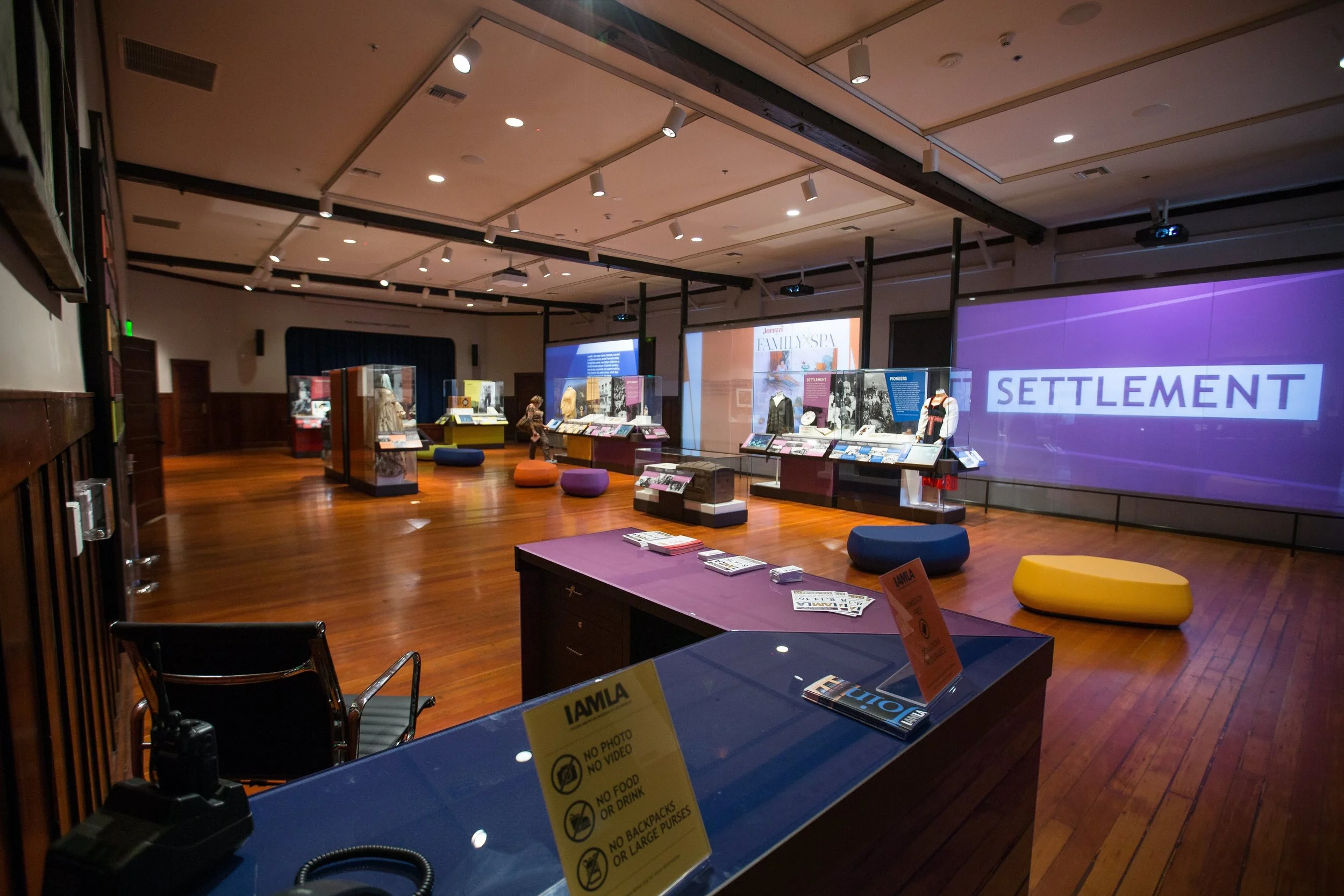
Views of the IAMLA permanent wing and the temporary exhibition The Sicilian Cart credit Taso Papadakis
U: Can you name a project/exhibition that the museum has created that has been one of your favorites, and why?
M: Among the various chapters of our permanent exhibition, Dago!, an exhibit that explores the history of anti-Italianism, is my favorite. This is the one that the public engages with the most. Of our temporary exhibitions, there are several that are particularly memorable. A Real Boy: The Many Lives of Pinocchio explores Pinocchio as one of the world’s most recognizable icons. It attracted a record number of visitors and delighted people of all ages. Woven Lives: Exploring Women’s Needlework of the Italian Diaspora is another favorite. It examined the experiences of Italian American women told through needlework and later won a national award. Debuting nearly a decade ago, The Sicilian Cart: History in Movement, presented in conjunction with the Musca Museum of Sicily and Dolce & Gabbana, was a showstopper, drop-dead gorgeous. Using a crane to bring in the carts through the second-story balcony doors is an experience I’ll never forget.
For more information about Marianna and her past and future projects at IAMLA, and other projects, including her latest book, please visit her site here. Marianna’s book The Italian Americans of Los Angeles: A History can be purchased on Amazon here. Also, for more information about the Italian American Museum of Los Angeles, please visit here. The museum can also be found on Instagram, Facebook, YouTube, and X.
